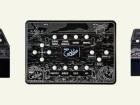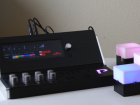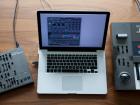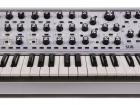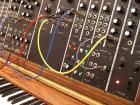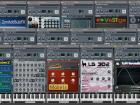Vintage Vault - Interview with the Sound Designers
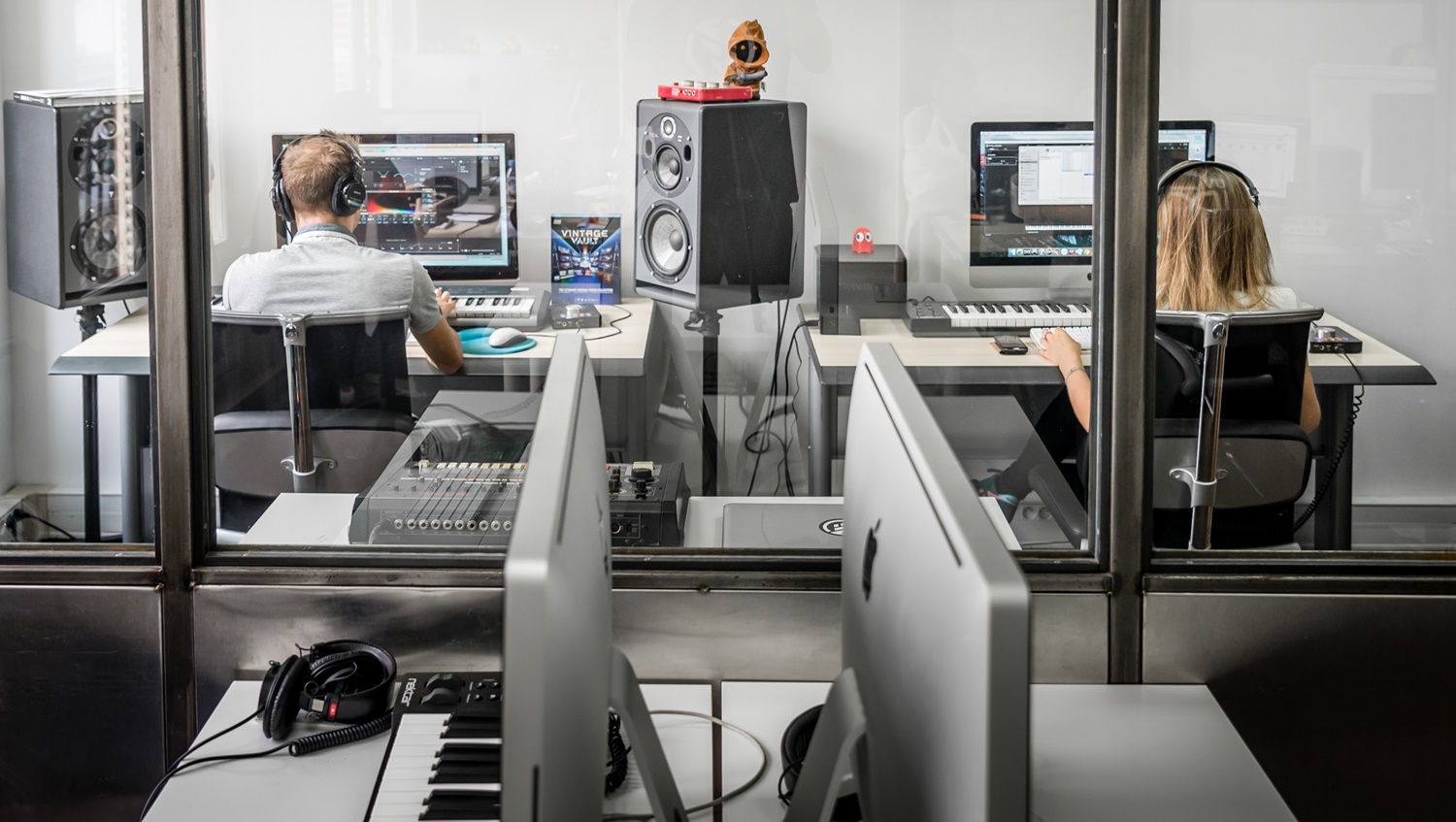
Post date:
Our Vintage Vault 2 Giveaway is over and the winners have been selected. Congratulations to James Jenkins, Battistelli Jerome, Andrei Lobadin, Andrew Ozimek, Johnny Hill, David Sprinkle, Kevin Johnson, Pallaten Couture, Tyler Thomas and Ben Bowman. We will be in touch to arrange delivery!
We also had the opportunity to have a chat with the two main sound designers of Vintage Vault 2 - Damien Vallet and Kevin Guilhaumou and get a peek behind the scenes at what it took to create such a large collection. Damien and Kevin both admit to being sound-aholics and we chat about some of the crazy rare synths that they got to record.
What inspired the creation of Vintage Vault?
Damien: At UVI most of us are music producers so the inspiration came from our needs as music enthusiasts. After releasing quite a few dedicated synth products it was time to pack them into a quality bundle and make an appealing offer.
Kévin: It seemed obvious to offer a special package for vintage synth lovers, so they will not have to choose and get the whole collection right away.
Many soft synths tend to focus on just one or two particular hardware synths, what inspired you to include such a large selection?
Damien: We are “sound-aholics”, we love the sounds from these machines, so we tried to break the museum attitude around those synthesizers: they are not cheap and they are hard to maintain, but they are made to make music, not to collect dust on a shelf. That’s why we opened the vault ;)
Kévin: There are so many different machines, with such different sounds that we could not only focus on one. Every machine has its own particularities that make it unique.
In which way is Vintage Vault 2 an upgrade from the original Vintage Vault?
Kévin: Since the original Vintage Vault, we have recorded a lot of new machines, so we thought we could make an even better package with them.
Damien: When you add 15 instruments, 32 drum machines and 3384 presets, you must call it an upgrade. And synthesizer history is so rich and deep that we have work for the next 5 years at least!
How did you go about sourcing all of the recordings from the original hardware?
Damien: We use all the possible ways of sourcing synths: synth collectors, second-hand shops, craigslist etc.. We’re always looking for new hardware. Sometimes somebody contacts us to say: ‘Hey I’ve got that crazy rare synth do you want to record it?”. Our answer is always: “Hell yeah!”
above: Damien Vallet - UVI Sound Designer
Which recording was the most challenging to get?
Damien: Working with old vintage synths is always a challenge… Our Emulator 2 (Emulation 2) had to be fixed almost every day during the recording because of a faulty component. The Prophet VS used on Vector Pro even died during the operation… RIP
Kévin: Another of the biggest challenges we had was to find all the drum machines of BeatBox Anthology 2, as there are a lot of rare machines, and even if you find them they are not always in their best condition...
Were there any synths that were impossible to include and if so why?
Damien: Yes, we try to avoid the newest generation of synthesizers. Because as the name states: there is “vintage” in Vintage Vault ;)
Which are your personal favorite instruments in the collection?
Kevin: BeatBox Anthology 2 for the priceless collection of sounds plus the creativity you can put in it, and UltraMini for its three wonderful oscillators and its flexibility.
Damien: One year ago I would have said Darklight IIx or The Beast for their incredible sounds.
But as a huge Oberheim fan, I think the OB Legacy is my new favorite. I love the OB-1.
“Use the Force, Luke !”
What has the feedback been like so far from musicians who have been using Vintage Vault 2?
Damien: We have a great customer relationship, ranging from awarded producers who want great presets to simple hobbyists in a quest for a particular sound used on a particular song. They seem to enjoy the simplicity of the user interfaces and the quality of the sounds.
Kévin: We receive a lot of great feedback, particularly on the realism of the sounds. I believe this is due to our passion for vintage machines and our dedication to sound quality.
What makes Vintage Vault better than most other synth software?
Damien: First of all it’s not only a synth software it’s a wide collection of sounds from every era of the modern music industry. You can hear all the best of subtractive, FM, wavetable, additive, drums, and vector synthesis. The bigger the better?
Kévin: Our approach is to capture “the sound and the soul” of the machine, we don’t really care to have the exact same controls, we want the sounds–not the controls, and that’s why we propose a hybrid engine combining deep sampling, modeling, and effects. We love the sounds coming from the records from the old days, and that’s what we try to deliver. Not counting that the other thing you get when you buy Vintage Vault is 20 years of UVI expertise..
The collection includes some ultra-rare prototypes and string synths from the ‘70s - can you name some examples?
Damien: We had the chance to record an obscure kind of Polymoog prototype that was thought to be in a much larger system. An incredible piece of history… This is one of those moments where you feel lucky. Antique pieces of music history are always welcome!
Kévin: You can also find a lot of rare machines from the ‘70s in Vintage Vault 2 like the Roland RS-505, the Korg PE2000 or the ARP Solina String Ensemble.
Which features in Vintage Vault 2 are you most proud of?
Damien: I designed Cameo CM from scratch. It’s a wavetable-based 2-oscillator synth that used the original waveforms from the CZ-1 but with a totally different architecture. So you’ve got the original timbre of the CZ with modern possibilities. That’s my baby.
Kévin: The instrument I’m the proudest of is Mello. The features included, like the tape mechanics and the key noise that you can adjust, give a lot a life to this mythical instrument!
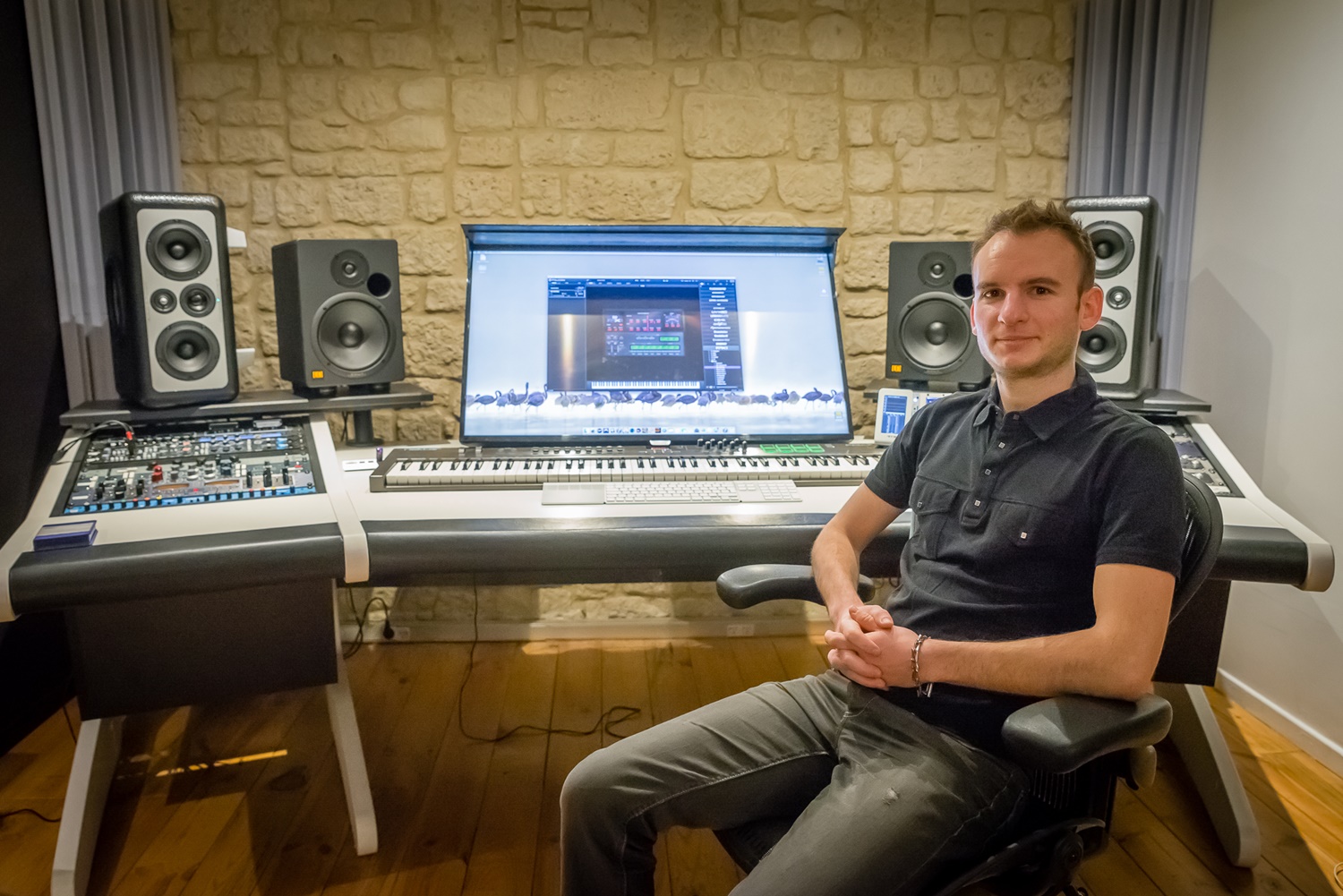
above: Kevin Guilhaumou - UVI Sound Designer
Tell us more about the design process - how long did it take you to complete Vintage Vault 2?
Damien: We try to work with a user approach in mind. It could seem trivial at first, but it’s really difficult not to overcrowd your user interface for example. You have to refrain yourself and say “Ok do I really need these control to make a better sound?”. The question works also in the other way: “ Is this control really effective? Is the range ok? etc ... As we are all musicians and software consumers, we wanted our products to reflect our use of those products: fast access to great sounds. Our ‘mojo’ could be: “One sound, one song”.
With all of the ‘80s nostalgia (think Stranger Things, etc.) do you think that the sounds of vintage synthesizers are making a comeback?
Kévin: There will always be a place for vintage sounds. I believe producers can always find a purpose for them, that only depends on their creativity!
Damien: I don’t think ‘80s nostalgia resurrected the sounds of vintage synthesizers. Those synth sounds never lost their place in the music. Back in the day, the only way to add those sounds to your music was to buy the original piece of gear. Some of those synths cost the price of a house… We’re taking those sounds back into the real world. New composers start to include them to their sonic world and older composers can re-use old sounds that they’ve lost or never been able to play.
What is the oldest synth in this collection? The newest?
Damien: The first product of the collection was Emulation 2. We spend months to create and record sounds.The newest addition is OB Legacy. A collection around the world of Oberheim. Pure analog pleasure...
Vintage synthesizers all work differently and some are quite complicated to master - how did you go about streamlining the user experience in Vintage Vault?
Damien: We are big fans of simplicity when it comes to design. As a musician, I hate when I have to tweak every knob and open the manual before getting any good sound out of a product.
Kévin: Mastering the machines is our job, we want to keep it simple for our users.
Damien: We’ve tried to keep a similar architecture for every synth. A simple architecture that could easily be understood: simple and efficient, but still powerful and with a modern approach.
